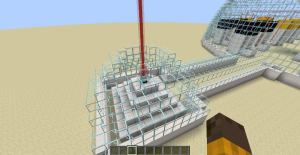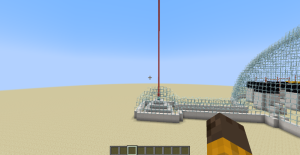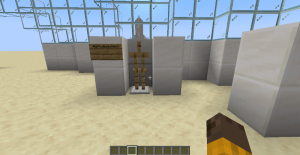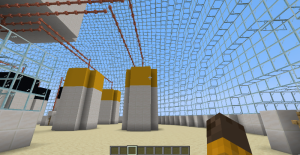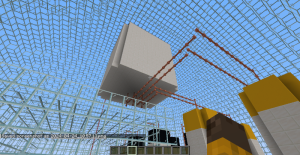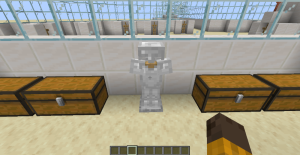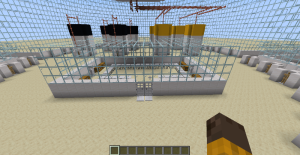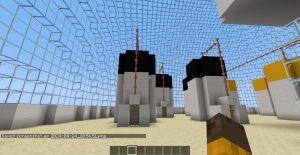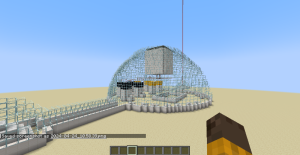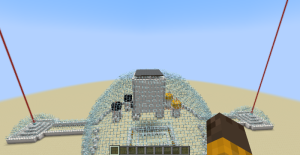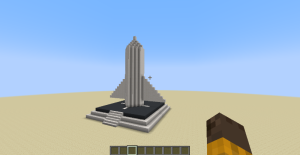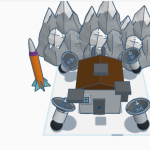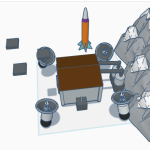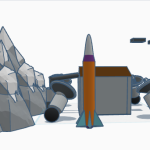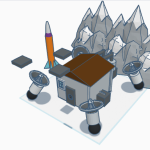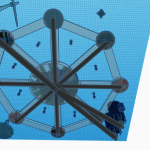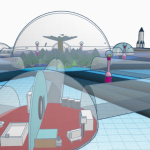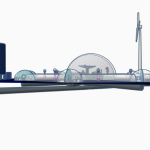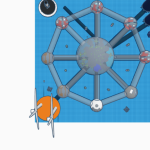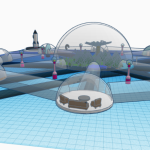Einstein Moon Camp by Einstein Lunar Explorer 3
Albert-Einstein-Gymnasium Berlin-Neukölln Germany 16 years old 5 / 1 German Moon
Project description
In diesem Projekt geht es darum, wie man Helium-3 vom Mond abbauen kann.
Aber warum Helium-3 überhaupt abbauen? Helium-3 ist ein Isotop, welches laut Wissenschaftler*innen und Physiker*innen eine brauchbare Energiequelle ist.
Das Isotop soll für die Kernfusion verwendet werden, wobei nicht klar ist, ob Kernfusion durch Helium-3 funktionieren wird. Wenn es aber funktioniert, ist Helium-3 eine Bereicherung für die Menschheit. Das Isotop gilt, als saubere Energieversorgung, weil viel Energie freigesetzt werden kann, ohne dabei schädliche Stoffe in die Umgebung freizusetzen.
Wir haben uns dafür entschieden, eine unbemannte Mondstation zu erstellen. Des Weiteren war uns wichtig, wichtige Ressourcen zu sparen und uns auf den Abbau von Helium-3 zu konzentrieren.
Der Mond verfügt über eine große Anzahl von Ressourcen. Im Durschnitt befinden sich rund 1,4 Tonnen Mineralien auf dem Mond, z.B. Basalt, Eisen, Silizium, Platin, Palladium, Rhodium, Titan und Helium-3. Neben den Mineralien befinden sich auf dem Mond 630 kg Sauerstoff, Eis und Wasser. Es könnte auf der gesamten Mondüberfläche bis zu 270 Milliarden Tonnen Wasser geben.
Die zuvor genannten Ressourcen könnte man zum Aufbau unserer Raumstation verwenden. Die Ressourcen, die auf dem Mond vorhanden sind, sind außerdem hilfreich, weil sie nicht extra von der Erde auf den Mond transportiert werden müssen.
Basalt: Massivbauten, Boden – und Treppenabläge, Fassadeplatten
Eisen: größere Gebäute können errichtet werden, Maschinen, Motoren
Quarz: Baustoff, Rohstoff für Keramik, Glas und Zementindustrie
Silizium: Photovoltaik, Mikroelektronik
Platin: Fahrzeugkatalysatoren, Laborgeräte, Werkstoffe für elektronische Kontakte, Medizin
Palladium: Produktion von PKW- Katalysatoren, Speichermaterial von Wasser (Wasserstoffautos)
Rhodium: Herstellung von Katalysatoren
Titan: Legierungsbestandteile für Stahl
[…weitere Aspekte in angehängter pdf sowie 3d-Modellierung mit Blender]
Project link
https://drive.google.com/open?id=1mVsnEM0bV2IW8Fg07uaNuEyrNnq8BtUN&usp=drive_fs
English translation
This project is about how to mine helium-3 from the moon.
But why mine helium-3 at all? Helium-3 is an isotope that scientists and physicists say is a viable source of energy.
The isotope is intended to be used for nuclear fusion, although it is not clear whether nuclear fusion will work with helium-3. But if it does work, helium-3 will be an asset to humanity. The isotope is considered a clean energy source because a lot of energy can be released without releasing harmful substances into the environment.
We decided to build an unmanned lunar station. It was also important to us to save important resources and concentrate on mining helium-3.
The moon has a large number of resources. On average, there are around 1.4 tons of minerals on the moon, e.g. basalt, iron, silicon, platinum, palladium, rhodium, titanium and helium-3. In addition to the minerals, there are 630 kg of oxygen, ice and water on the moon. There could be up to 270 billion tons of water on the entire surface of the moon.
The resources mentioned above could be used to build our space station. The resources available on the moon are also useful because they do not have to be transported from the earth to the moon.
Basalt: solid buildings, floor and staircase coverings, facade panels
Iron: larger buildings can be built, machines, engines
Quartz: building material, raw material for ceramics, glass and cement industries
Silicon: photovoltaics, microelectronics
Platinum: vehicle catalysts, laboratory equipment, materials for electronic contacts, medicine
Palladium: production of car catalysts, water storage material (hydrogen cars)
Rhodium: production of catalysts
Titanium: alloy components for steel
[…further aspects in the attached PDF and 3D modeling with Blender]
#3D Design
Other Projects
Moon Camp – Creazione in cartone



